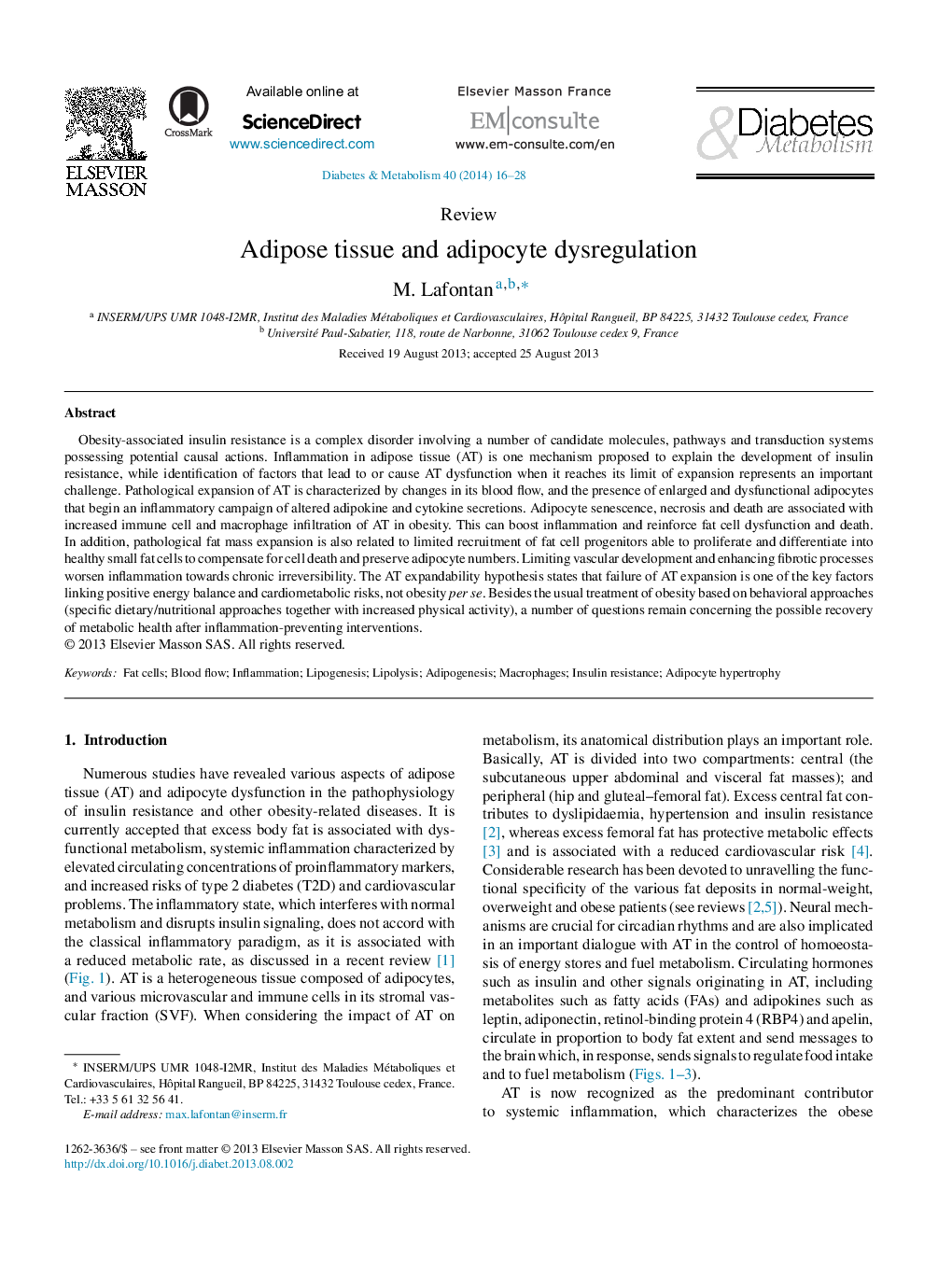| Article ID | Journal | Published Year | Pages | File Type |
|---|---|---|---|---|
| 3259385 | Diabetes & Metabolism | 2014 | 13 Pages |
Obesity-associated insulin resistance is a complex disorder involving a number of candidate molecules, pathways and transduction systems possessing potential causal actions. Inflammation in adipose tissue (AT) is one mechanism proposed to explain the development of insulin resistance, while identification of factors that lead to or cause AT dysfunction when it reaches its limit of expansion represents an important challenge. Pathological expansion of AT is characterized by changes in its blood flow, and the presence of enlarged and dysfunctional adipocytes that begin an inflammatory campaign of altered adipokine and cytokine secretions. Adipocyte senescence, necrosis and death are associated with increased immune cell and macrophage infiltration of AT in obesity. This can boost inflammation and reinforce fat cell dysfunction and death. In addition, pathological fat mass expansion is also related to limited recruitment of fat cell progenitors able to proliferate and differentiate into healthy small fat cells to compensate for cell death and preserve adipocyte numbers. Limiting vascular development and enhancing fibrotic processes worsen inflammation towards chronic irreversibility. The AT expandability hypothesis states that failure of AT expansion is one of the key factors linking positive energy balance and cardiometabolic risks, not obesity per se. Besides the usual treatment of obesity based on behavioral approaches (specific dietary/nutritional approaches together with increased physical activity), a number of questions remain concerning the possible recovery of metabolic health after inflammation-preventing interventions.
